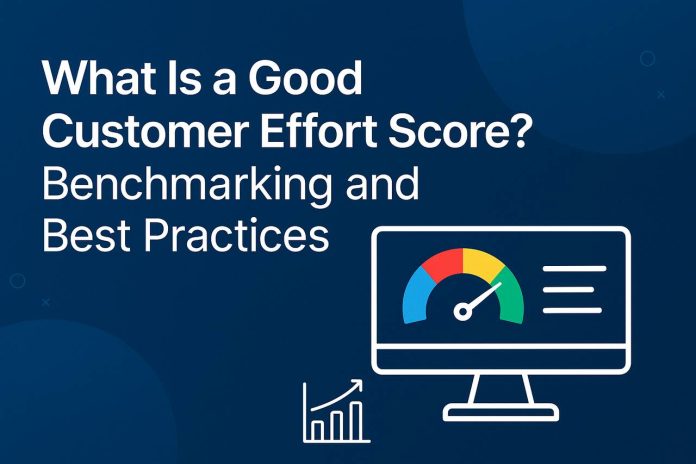“It shouldn’t be this hard.”
If a customer utters that phrase, even silently, you’ve already lost the battle.
Effort is the silent killer of customer satisfaction. Not price. Not product. Not even politeness. Just friction. Delay. Red tape. One more transfer. One more password reset.
And that’s exactly why the Customer Effort Score (CES) exists. But here’s the question teams keep asking:
What is a good customer effort score?
Like, actually good, not just “better than last quarter” or “not worse than our competitor.”
Let’s unpack that.
First: What are we measuring, exactly?
Customer Effort Score is typically measured via a post-interaction survey that asks a variation of:
“How easy was it to get your issue resolved today?”
Answers usually fall on a 1-to-5 or 1-to-7 scale, where lower numbers mean higher effort (bad), and higher numbers indicate a smoother, more effortless experience (good).
It’s deceptively simple, and incredibly revealing. Studies by CEB (now Gartner) found that reducing customer effort is a better predictor of loyalty than Net Promoter Score (NPS) or CSAT. Why? Because frustration breaks relationships faster than delight builds them.
So… what’s a “good” CES?
Here’s where it gets a little murky.
Industry data suggests that on a 1–7 scale:
- Scores above 5 are typically considered “low effort” (good)
- Scores between 4–5 are neutral or borderline
- Scores below 4 often signal trouble (high effort)
But context matters.
A CES of 5.3 in a high-volume telecom support center is great. The same score at a white-glove concierge service? Not so much.
Benchmarking isn’t just about numbers, it’s about expectations.
Three rules for benchmarking CES (without lying to yourself)
- Don’t compare apples to B2B SaaS.
Different industries carry different expectations. A cable subscriber might tolerate more effort than a luxury hotel guest. Know your vertical. - Use internal benchmarks first.
Before you stress over industry averages, look inward. Are your scores improving over time? Are they consistent across teams and channels? - Watch the trend line, not the trophy case.
Customer effort is dynamic. A good score today won’t save you from a process failure tomorrow. Track CES alongside call analytics, resolution time, and repeat contact rates.
The hidden trap: Effort ≠ satisfaction
Here’s the twist: customers can be satisfied with a high-effort experience if they feel the agent went above and beyond. And they can be dissatisfied with a low-effort experience if they didn’t feel heard.
The result? Fewer escalations. Fewer call-backs. Fewer “Why am I still on hold?” moments.
That’s what low effort actually feels like.
Best practices for improving CES (without gaming the survey)
- Map the friction
Start with a customer journey audit. Where are people getting stuck? Where do tickets ping-pong between departments? Where do chatbots quietly fail? - Empower the front line
Agents can’t lower effort if they’re stuck waiting on supervisors or bouncing between six tools. Give them real-time knowledge, not just a knowledge base. - Kill scripts. Use cues.
Rigid scripting often increases perceived effort. Instead, use smart prompts that adjust based on customer tone, query type, and compliance needs. - Follow up with action, not a thank-you email
If a customer flagged an issue in a CES survey, close the loop. Silence = indifference. Effort = “I had to follow up myself.”
But wait, what about survey fatigue?
Valid concern. The more surveys you send, the more likely customers are to ignore them. Or worse, only respond when they’re angry.
Two fixes:
- Sample intelligently. Don’t survey every interaction. Randomize by customer segment or ticket type.
- Embed feedback loops. Make feedback part of the experience, not an afterthought. In-app CES prompts. Voice survey during hold time. Frictionless feedback.
CES should feel less like a pop quiz and more like a conversation.
Final thought: Easy > amazing
We all want customers to be wowed. But nine times out of ten, they just want it to be easy.
No complicated logins. No ambiguous FAQs. No fifteen-minute waits for a password reset. They don’t need magic, they need momentum.
So, what is a good customer effort score?
It’s the one that keeps your customers from muttering, “It shouldn’t be this hard.”
It’s not a perfect number. It’s a process that gets smoother every week.
